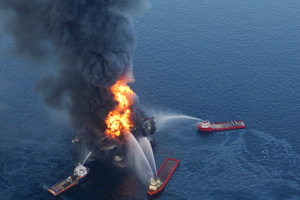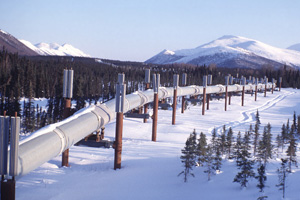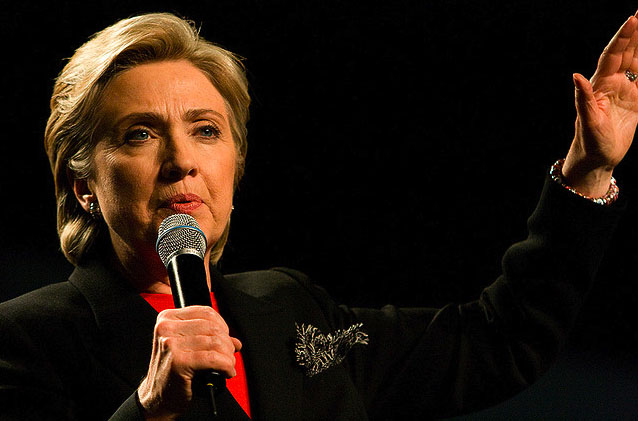Last year was quite a year for oil and gas disasters. In addition to the BP blowout, there was a leak on BP’s TransAlaska pipeline, a million-gallon oil spill in Michigan, and a gas explosion that destroyed 37 homes and killed eight people in California. So it would seem like a lousy time for a Canadian company to propose building a pipeline, the Keystone XL, right through the middle of the continent—especially one that may be unnecessary and that even some oil companies think is overpriced.
Below, click on the interactive map’s hot spots to read more about the proposed pipeline route.











Starting in Hardisty, Alberta, TransCanada’s Keystone XL Pipeline would pump 900,000 barrels of crude a day to refineries in Texas. Extracted from Canada’s tar sands, the crude is some of the dirtiest in the world, with a carbon footprint 20 percent higher (PDF) than conventional oil’s.
Because the pipeline crosses the border, it needs State Department approval. Secretary of State Hillary Clinton has said she’s “inclined to” okay the project in early 2011. Environmental groups are pleading with her to wait. Last July, the EPA flagged the Keystone XL proposal (PDF) for further review, citing concerns over air pollution, public safety, and spills.
The Keystone XL would cross more than 70 rivers and streams (PDF), including the Missouri, Platte, and Arkansas.
TransCanada has told Nebraska landowners (PDF) it will claim eminent domain if they don’t let its pipeline pass through their land. “Some of the neighbors, they just said, ‘There’s no way to fight an oil company—we just have to sign off,'” says Merrick County farmer Randy Thompson.
The Ogallala Aquifer, which provides nearly one-third of the groundwater used to irrigate US crops, lies directly in the Keystone XL’s path. The pipeline would run four feet below the surface, which could pose a hazard in areas with shallow water tables. “Anytime it leaked, it would go directly into the water supply,” says Thompson.
Residents near the pipeline’s Texas terminals say there’s been little public notice from TransCanada. Karla Land, who lives outside Houston near the site of a major 1994 pipeline explosion (PDF), isn’t impressed by the promise of shut-off valves every 20 miles. In case of a rupture, she says, “20 miles worth of oil is going to come out of it.”
The Keystone XL is expected to cost $12 billion—but is it worth it? Three American companies, including two Kansas refiners, are suing TransCanada, claiming they’re being overcharged for using its pipelines. If tar-sand oil exports keep growing at current rates, the Keystone pipeline and other Canada-US pipelines won’t reach full capacity until 2038. The Keystone XL, scheduled for completion in 2013, would not hit capacity until 2056.
The Keystone XL would supplement the existing Keystone pipeline, which went into operation last summer and can carry up to 435,000 barrels of oil a day. Sections of it were built with steel produced by an Indian manufacturer later found to have supplied defective steel (PDF) for other US pipelines.
The federal government has 88 inspectors overseeing 2.3 million miles of gas and oil pipelines. Between 2000 and 2009, there were 2,800 pipeline accidents, causing 160 deaths and more than $3.2 billion in damages. Maximum fine? $1 million.
TransCanada says the new 1,661-mile pipeline is crucial for America’s energy independence: “Oil will flow from America’s good friend and neighbor—Canada—to help replace the five million barrels of oil the US imports daily from the Mideast and Venezuela.”
Legend:![]()
Illustrated by Karen Minot
UPDATE: Several environmental groups have recently raised concerns about the ties between Secretary of State Hillary Clinton and the lead lobbyist for the international oil services company TransCanada.
Friends of the Earth, Corporate Ethics International, and the Center for International Environmental Law are seeking a record of all communication between Clinton’s office and that of Paul Elliott, who served as the national deputy director in her 2008 campaign and now serves as the director of government relations at TransCanada. The initial Freedom of Information Act request was denied. A new request was submitted in late January.
Clinton raised ire among environmental groups and some senators last fall when she indicated that the pipeline was likely be approved despite the fact that the evaluation of the environmental impact of the proposal is still underway.
At the same time, a report that TransCanada released in late January predicted higher prices for Canadian crude in the Midwest—which isn’t likely to make the pipeline more popular there.














